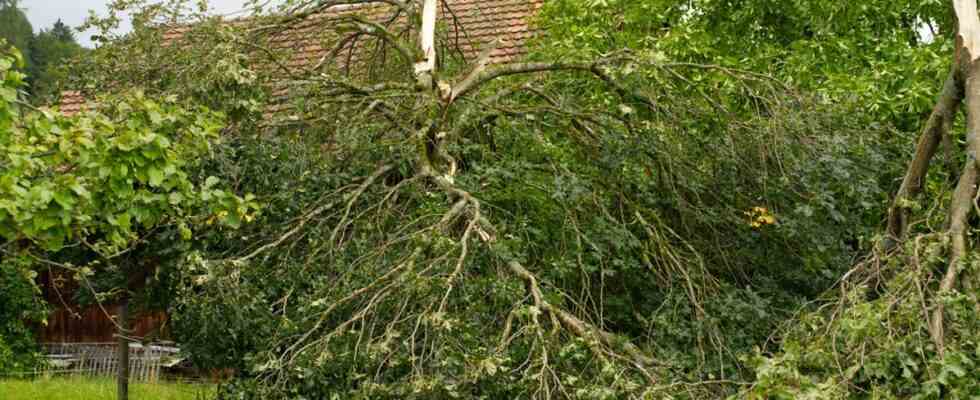Shelter everything that can be
When a storm is approaching, it’s best to take whatever shelter you can, whether it’s the outdoor furniture or pots that you can carry. This will prevent them not only from being damaged in the event of hail or violent wind and rain, but also, in the case of furniture, from being knocked over or dispersed by the wind, which can become a source of accident. If you don’t have garage nest’garden shedyou can store everything inside during the storm.
For things that are too bulky, make sure the equipment is securely fastened.
Prepare the ground
The soil is built up over the years, however, the result of this slow work can be destroyed by the effect of the storm. Indeed, the heavy and abundant rains tamp the earth and have an effect of top layer washout especially on sloping ground. In order to limit these effects, it is recommended to use mulching for your plants. This amounts to covering your soil with straw or any previously dried plant material, such as dead leaves, for example.
Protect your vegetable garden
Under the power of certain stormy episodes, your vegetable garden can be devastated. It can be due to wind, hail, but also torrential rain. But if all this gives you time to act, for preserve your plantsyou can try to protect them:
- So you can install tutors at the foot of the various plants to allow them to resist the wind.
- In garden stores you can also find protection bells that will allow you to cover your crops. Be sure to secure them to the ground so that they do not fly away.
- If you don’t have a protective cover and a storm is approaching, you can cover plants that aren’t too tall with overturned flower pots.
- In the trade you can also find hail nets which can remain in place once installed.
- Before the storm arrives, don’t forget to harvest all that can be harvested. In the case of trees, the branches will thus be less loaded and will be less likely to break.
- For pots and plantersyou can place them under cover or put them indoors.

prune the trees
If you have large trees on your property:
- As soon as you spot a branch that seems fragile, it is important to eliminate it when the weather is calm. Thus, in the event of strong winds, it will not risk causing damage or an accident.
- Also consider fruit trees which may be more vulnerable when the branches bend under the weight of the fruit.
Windbreak hedges
In areas frequently subject to strong winds, it may be worth opting for one or more windbreak hedges. This durable solution will help you preserve your plants. To compose it, you will have the choice between many essences according to your tastes, but also your geographical location, exposure, etc.
These hedges have the advantage of cut the wind by allowing just enough to pass through to avoid the creation of violent air currents, as it is possible to encounter with walls. In addition to being aesthetic, these hedges shelter a very rich biodiversity.
After the rain comes the good weather
When the storm is over, it is then time to proceed with the cleaning your garden. Take stock of your exterior:
- If fruits or vegetables have fallen on the ground, start by pick them up to prevent them from rotting on the ground. You can eat those that are not too damaged or make jams, etc.
- Check if mulching remained in place and if necessary, remove a new one.
- If flowers or branches have been damaged, cut them.
- Immediately after the storm, remove the bells or any other protection installed for this purpose so as not to risk seeing your plants die of asphyxiation.
- Correctly replace the stakes if necessary.

